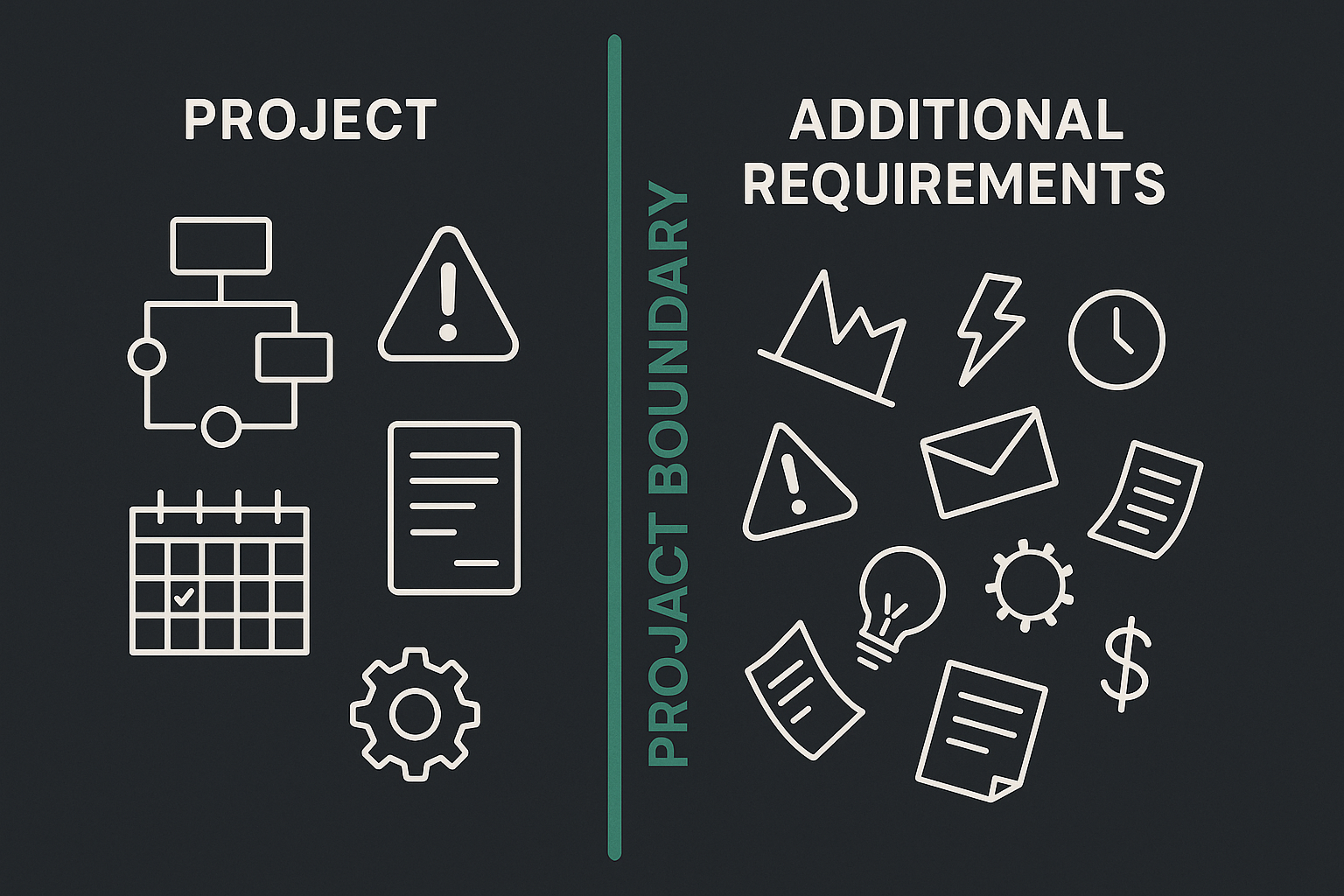How to Prevent Scope Creep: A Guide for Freelance Developers & Designers
The Ultimate Guide to Defining Scope of Work and Stopping Scope Creep
It always starts with a simple request: "Can you just quickly...?"
Before you know it, you're working nights and weekends on features you never quoted for, your project timeline is a distant memory, and your profitability is plummeting. This is scope creep, and it's a silent profit killer for freelancers. It's the single biggest source of conflict and financial risk in the world of web design and development.
But it doesn't have to be this way. Your best defense isn't just experience or good client relationships—it's a clear, comprehensive, and contractually-binding Scope of Work (SOW) clause.

What is Scope Creep? (And Why It's So Dangerous)
Scope creep is the process by which a project's scope expands beyond its original, agreed-upon objectives without a corresponding adjustment in time, budget, or resources. As detailed in guides from major freelance platforms like Upwork, the consequences of unchecked scope creep are severe:
- Unpaid Work & Financial Loss: You end up doing more work for the same amount of money, drastically reducing your effective hourly rate.
- Project Delays: Additional features and revisions push back deadlines, creating a domino effect on your other client commitments.
- Client Friction: What started as a collaborative partnership can sour when expectations become misaligned, leading to payment disputes and damaged relationships.
- Burnout: The pressure of an ever-expanding project is a fast track to exhaustion and losing passion for your craft.
The Solution: Architecting an Ironclad Scope of Work Clause
A well-crafted SOW is the foundation of a successful project. It's not about being rigid; it's about creating clarity and a fair process for everyone involved. Here’s how to build one.
Step 1: Be Hyper-Specific with Deliverables
"Build a 5-page website" is a terrible scope. It's an invitation for misunderstanding. What constitutes a "page"? Does it include a blog? A portfolio gallery? An e-commerce store?
Instead, you must be ruthlessly specific. Your deliverables list should be a detailed checklist of everything you will provide.
Bad Example:
- Design and build a new company website.
Good Example:
- Homepage Design & Development (1 revision round)
- About Page Design & Development (1 revision round)
- Contact Page with functional contact form (sends to client's designated email)
- Services Page (static content, up to 5 service sections)
- Blog index page and single post template
- Setup of up to 5 initial blog posts (content provided by client)
This level of detail leaves no room for ambiguity. The client knows exactly what they are getting.
Step 2: The Power of "Exclusions"
This is what separates the amateurs from the professionals. As leading industry platforms like Webflow emphasize, explicitly stating what is not included in the project is just as important as stating what is. This proactively addresses common assumptions.
Your "Exclusions" section should be a standard part of every contract.
Example Exclusions:
- Website hosting and domain name registration.
- Content creation, copywriting, or data entry.
- SEO services beyond initial on-page setup of titles and meta descriptions.
- Post-launch support, maintenance, or updates (available under a separate Retainer Agreement).
- Third-party plugin/software licensing fees.
By listing exclusions, you prevent the classic "I assumed that was included" conversation before it ever happens.

Step 3: Define Client Responsibilities
A project's success is a two-way street. Delays are often caused by clients who are slow to provide feedback, content, or other necessary assets. You must contractually obligate the client to participate in a timely manner.
Example Client Responsibility Clause:
- "Client agrees to provide all necessary assets (text, images, branding guidelines) and feedback on deliverables within [e.g., 3] business days. Delays in providing assets or feedback may result in a corresponding extension of the project timeline and may incur additional costs."
This clause protects your schedule and ensures the client understands their role in keeping the project on track.
Step 4: Create a Formal Change Order Process
Change is inevitable. The goal isn't to prevent changes but to control how they are handled. A formal change order process is your mechanism for this control. As one freelancer shared in a community forum, without a formal process, client "feedback" can quickly morph into a "full rewrite," throwing the project into chaos.
Explain that any work requested outside the agreed-upon SOW must be documented in a written "Change Order." This document should clearly outline:
- The additional work to be performed.
- The additional fee for this work.
- The impact on the overall project timeline.
The clause should state that work on any change will only begin after the client has signed the Change Order and, if applicable, paid a deposit. This transforms "scope creep" into a "new sale."
The Ultimate Tool for Peace of Mind
Writing a perfect scope of work takes time, legal knowledge, and the kind of experience that often comes from being burned on a project. But what if you could have an AI expert review your contract in seconds to spot these exact issues before you sign?
That's why we built PactlyApp.com.
Upload your freelance contract, and our AI will instantly scan your Scope of Work for vague language, missing exclusions, an undefined change process, and other critical red flags that lead to scope creep. It acts as your personal paralegal, analyzing the clauses that matter most and giving you the confidence to sign. Don't leave your profits to chance.
Analyze Your Contract for Free

Conclusion
Scope creep is a challenge every freelancer faces, but it is entirely manageable. By architecting an ironclad Scope of Work clause—complete with specific deliverables, clear exclusions, defined client responsibilities, and a formal change process—you transform your contract from a simple agreement into your most powerful project management tool.
Protect your time, your profits, and your sanity. A strong contract is the foundation of a successful and sustainable freelance business.